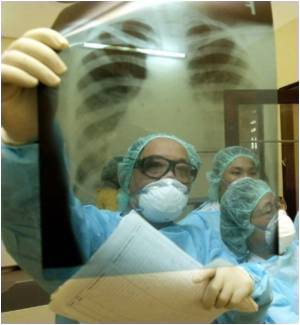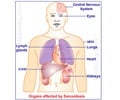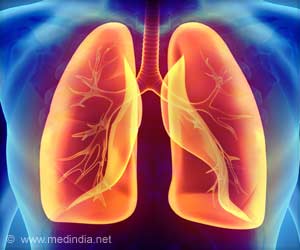Japanese researchers might have come up with a new treatment that could preserve lung function in idiopathic pulmonary fibrosis (IPF) patients.

"This novel study provides encouraging evidence to pursue the potential of an efficacious treatment with NAC for patients with the early stage of IPF in a well designed clinical trial. In that sense, the finding was expected," said Sakae Homma, M.D., Ph.D., professor of the Department of Respiratory Medicine, Toho University School of Medicine in Tokyo.
IPF is a lung disease characterized by progressive scarring of the lung tissue, which ultimately loses its ability to transport oxygen. Once diagnosed, half of IPF patients die within three to four years. IPF has no known cause or effective therapy.
It is hypothesized that an oxidant -- antioxidant imbalance may contribute to the disease process in IPF. Acetylcysteine, which is a precursor to the antioxidant glutathione, may be reduced in the lungs of patients with IPF. In this study, Dr. Homma and colleagues compared 48-weeks declines in forced vital capacity (FVC) and diffusing capacity between 100 IPF patients who were randomly assigned to receive treatment with 352.4 mg of inhaled NAC or no therapy. They then compared baseline FVC -- a measure of lung function -- to FVC after 48 weeks of treatment.
In a subset of patients with mild IPF (defined as initial %FVC less than 95 percent of predicted, or initial %DLco less than 55 percent of predicted) the rate of decline in lung function was significantly lower in those who had received the treatment than in those with no therapy.
"This shows a significant benefit for patients who received NAC compared with those who received no therapy," said Dr. Homma.
Advertisements
"Our study compared the differences between NAC-therapy arm and a true 'no-therapy' arm and demonstrated a therapeutic effect on physiologic measurements in IPF," said Dr. Homma. "Hence, this randomized control trial results are novel findings. I expect that our study will serve as a guide to develop a new therapy for IPF in the future."
Advertisements
"Since we have obtained positive results in patients treated with NAC for IPF without any immunosuppressive or anti-fibrotic agents, we expect it to be one of the candidates for IPF therapies. At this point, there is no cure for IPF. From that standpoint, it is of a great significance for us to establish a new therapeutic strategy from the early stage of IPF," said Dr. Homma. "We will continue the follow-up of the patient cohort included in this study to identify whether NAC can contribute to the prolonged survival of patients with IPF. In addition, since NAC is thought to be an antioxidant agent, it is expected that the indication will be extended to interstitial lung diseases other than IPF.
"Other clinical studies of NAC therapy are currently underway in the United States. We hope that our study results will be reproduced in those western clinical studies," said Dr. Homma.
Source-
GPL











